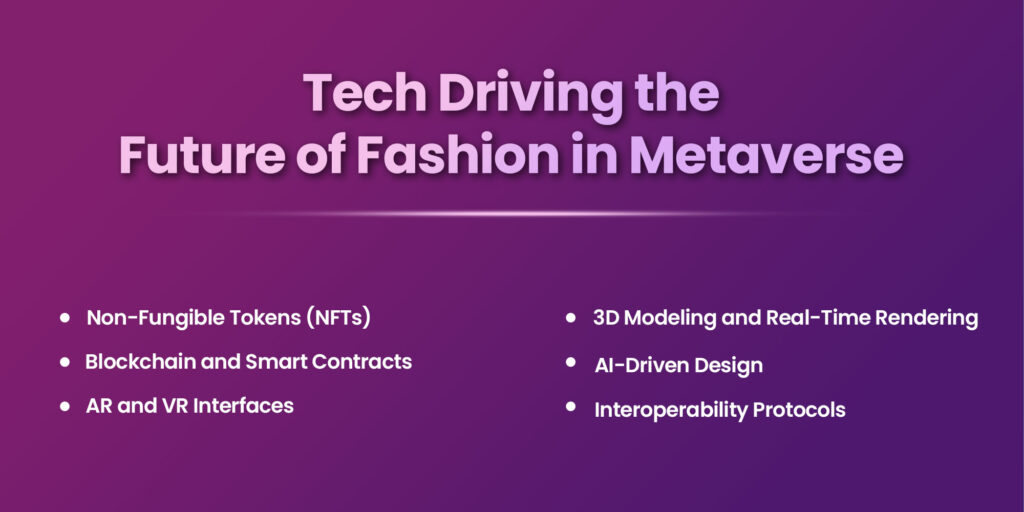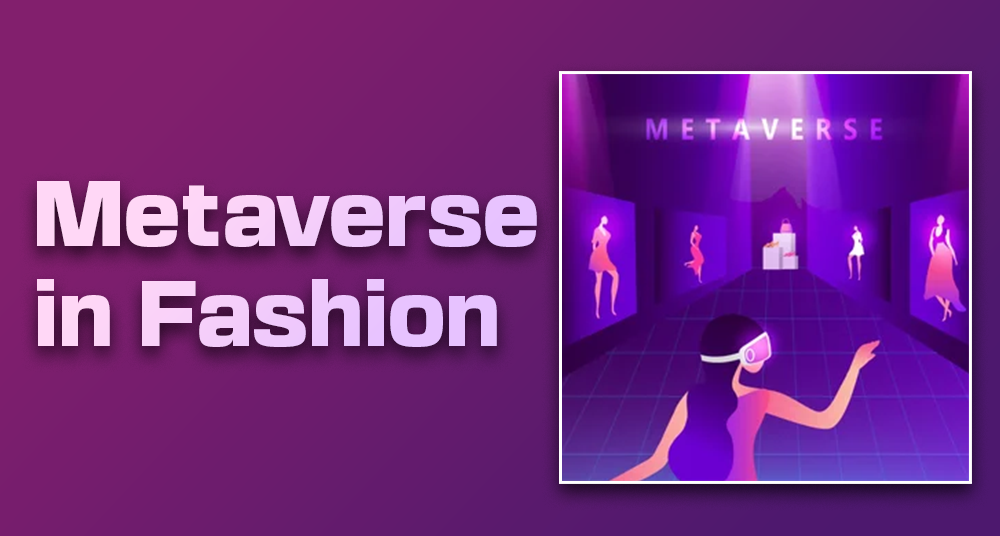Imagine stepping into a digital realm where fashion transcends the physical and becomes a boundless, creative, and immersive experience. The Metaverse in Fashion isn’t just a frontier—it’s a revolution on the horizon. By 2030, this convergence of digital innovation and style promises to redefine how we create, wear, interact with, and even own fashion. In this exploration, we’ll unpack the market’s potential, the technologies powering the shift, the driving forces behind this transformation, and how fashion brands and consumers must adapt to thrive in this new world.
What is Metaverse in Fashion?
At its core, the Metaverse in Fashion refers to the intersection of fashion and virtual environments—shared, persistent digital universes where users can engage through avatars, social interactions, immersive experiences, and commerce. It encompasses:
- Digital fashion items: Clothes, accessories, and jewelry exist purely in digital form, worn by avatars in virtual worlds.
- AR/VR try-ons: Users experience garments on their avatars or bodies before purchase.
- Virtual fashion shows and events: Live and interactive, with no geographic constraints.
- Blockchain-enabled ownership: Non-fungible tokens (NFTs) provide verifiable ownership of virtual garments.
- Co-creation with consumers: Empowered users participate in designing or shaping collections for the metaverse.
The Metaverse in Fashion isn’t an add-on—it’s an extension of identity, self-expression, and commerce in a digital dimension.
Metaverse in Fashion: Market Size by 2030
Analysts forecast explosive growth for the Metaverse in Fashion market. By 2030
The global digital fashion market was estimated to reach USD 107.49 billion at a CAGR 32.62%, driven by digital skins, avatar customization, and virtual ownership.
The broader fashion metaverse economy, including AR/VR services, virtual runways, and integration with e-commerce, could exceed $200 billion.
These figures reflect not only consumer spending but also brand investments in marketing, tech, and new revenue models. As the line between physical and digital fashion blurs, expect traditional luxury and fast fashion brands alike to stake their claim. In short, Metaverse in Fashion is set to become a multi‑billion‑dollar sector by 2030—transforming commerce, creativity, and connections.
Tech Transforming Fashion in Metaverse

The rise of Metaverse in Fashion depends on a powerful tech underpinning:
Non-Fungible Tokens (NFTs)
NFTs enable unique digital ownership and provenance. Brands like Gucci and Dolce & Gabbana have sold digital garments as limited-edition NFTs, giving users exclusive access and status.
Blockchain and Smart Contracts
Immutable ledgers verify ownership, ensure royalties, and automate resale transactions. Designers receive royalties each time a digital garment changes hands.
AR and VR Interfaces
Augmented reality lets consumers virtually try on clothes via smartphone apps or AR mirrors. VR enables fully immersive runway shows and shopping environments—users explore virtual boutiques or fashion events in 3D.
3D Modeling and Real-Time Rendering
Photorealistic digital fashion relies on sophisticated 3D fashion software, physics-based fabric simulation, and real-time GPU rendering. Advances in cross-platform 3D engines (like Unreal Engine and Unity) allow seamless use across mobile, desktop, and VR headsets.
AI-Driven Design
Artificial intelligence can generate new patterns, match body types to styles, and predict trends. AI also personalizes the user journey, offering recommendations for digital wardrobes in the metaverse.
Interoperability Protocols
Standards like WebXR, glTF, and open-source avatar systems ensure users can carry wardrobes and identity across virtual worlds—fashion designed once can be worn anywhere.
Major Trends & Market Drivers for Metaverse in Fashion
Digital-First Consumers & Millennials/Z Gen Influence
Younger consumers prize digital identity. They invest in avatar aesthetics across games and platforms—spending thousands on rare skins. This behavior translates naturally to fashion consumption in the metaverse.
Virtual Showrooms & Fashion Weeks
Digital-only fashion events eliminate venue and travel costs, offer global consumer access, and allow real-time engagement. Some luxury brands plan metaverse shows as their main platform before 2030.
Brand Collaborations with Virtual Platforms
Collaborations between fashion houses and gaming platforms (e.g., partnerships like Balenciaga with Fortnite or Louis Vuitton with League of Legends) open consumer access and drive brand relevance in new spaces.
Sustainability Pressures & Virtual Alternatives
Digital wearables reduce the environmental footprint of physical garment production. Virtual fashion offers a sustainable path for consumers who want novelty without waste.
Rise of Digital-Only Luxury Goods
Luxury brands explore exclusive digital items as aspirational status markers. Like collectible watches, digital handbags or shoes become symbols of prestige.
Gamification & Social Commerce
Fashion games that allow users to dress avatars, compete, or co-create collections are gaining traction— blending community, entertainment, and commerce in one ecosystem.
Consumer Trends by 2030
Avatar-Centric Self-Expression
Consumers craft multi-avatar wardrobes—clothing for VR hangouts, professional metaverse meetings, fitness apps, and more. Wardrobe curation follows social demands, seasons, and event types.
Hybrid Outfits
People blend physical and digital fashion—owning a pair of real-world sneakers and their virtual version. A purchase often includes both, offering cohesion between online presence and physical identity.
Virtual Wardrobe Libraries
Much like real closets, users organize digital wardrobes categorized by season, mood, event, or rarity. Platforms may offer subscription-based wardrobe rentals.
Wear-to-Earn & Social Staking
Gamified models encourage wearing digital items to earn tokens, access privileges, or unlock experiences, adding value beyond visuals.
Democratized Fashion Design
Micro-designers gain distribution through digital platforms without manufacturing costs. Platforms offer DIY tools, user-generated content, or co-design opportunities.
Challenges & Critical Considerations for Metaverse in Fashion
Intellectual Property & Counterfeits
Digital fashion is vulnerable to counterfeit NFTs and IP infringement. Brands must invest in authentication standards and blockchain traceability.
Interoperability Fragmentation
Without universal standards, wardrobes remain siloed across platforms. Consumers may lose value if they can’t port their purchases.
Digital Divide & Accessibility
Requiring VR headsets or high-performance devices limits who can participate. Equitable access ensures broader adoption.
Environmental Impact of Blockchains
Some networks (e.g., proof-of-work chains) consume high energy. Brands must opt for eco-friendly blockchains (proof-of-stake).
Legal & Regulatory Frameworks
Tax, consumer protection, digital ownership laws, and jurisdictional issues remain murky. Clear regulation is essential by 2030.
User Experience (UX) Limitations
Physical garments rely on feel, fit, and material interaction. Digital fashion must replicate touch, drape, and motion convincingly to appeal broadly.
Cybersecurity & Fraud Prevention
Hacked NFTs, phishing attempts, and wallet scams target fashion-savvy consumers. Strong platform security is non-negotiable.
What Fashion Brands Must Do by 2030?

Invest in Digital Infrastructure
Build or partner with platforms offering virtual stores, avatar dressing rooms, and NFT minting. Robust digital technology prepares brands for multiverse expansion.
Adopt NFT-Based Product Lines
Launch limited and utility-driven digital collections. Integrate perks like community memberships or real-world rewards with NFT ownership.
Collaborate with Tech & Gaming
Partnerships with leading metaverse platforms or gaming studios increase visibility and relevancy among younger audiences.
Champion Open Standards & Interoperability
Advocate for glTF, WebXR, avatar standardization to let users bring branded wardrobes across platforms. Interoperability fosters ecosystem cohesion.
Educate & Engage Consumers
Develop marketing narratives to explain digital ownership, utilities, and value. Host digital events, workshops, or ambassador programs to foster education.
Prioritize Sustainability
Use low-energy blockchains, highlight environmental advantages of digital wearables, integrate carbon offset strategies. This reinforces brand responsibility.
Leverage AI for Market Intelligence
Analyze consumer preference signals, simulate digital wear behaviors, forecast style trends—all to inform both virtual and physical lines.
Ensure Omni‑Channel Cohesion
Synchronize physical store experiences with digital ecosystems. In-store AR try-ons could unlock NFT giveaways, blending online and offline engagement.
Next in Style: A Glimpse at Fashion in 2030
By 2030, physical and digital wardrobes will be interwoven:
- Hybrid wardrobes: Consumers own both physical and digital versions of garments. Buying shoes today may involve a matching pair for your avatar tomorrow.
- Fashion NFTs with utility: Visual rarity, yes—but also access. Digital runway attendance, VIP chatrooms, events, or early access to new drops.
- Virtual influencers and AI stylists: CGI influencers model new collections in the metaverse. AI stylists recommend items for your avatar’s virtual life, mood, or event.
- Virtual-fitted-to-real fit tech: AR systems capture body dimensions automatically, ensuring both digital and physical items fit seamlessly.
- Community-driven design: Brands crowdsource ideas within digital communities. Trending colors or silhouettes emerge first in the metaverse before reaching physical production.
Final Thoughts
The Metaverse in Fashion by 2030 is no sci-fi dream—it’s an imminent ecosystem replete with economic promise, creative freedom, and transformative consumer experiences. But success demands more than digital assets: it requires strategic tech adoption, sustainability-driven practices, standardized interoperability, and clear user benefits.
For brands and designers ready to embrace digital-first identities, co-creation, and blockchain-powered ownership, the metaverse becomes a landscape of possibility. For consumers, fashion evolves beyond racks and runways into realms where creativity is unbounded and personal expression knows no limits.
Whether you’re a boutique designer, a global luxury house, or a curious consumer preparing for tomorrow’s wardrobes, the time to engage is now. The Metaverse in Fashion isn’t just coming—it’s shaping the future of how we dress, socialize, and define ourselves. The year 2030 awaits, virtual runway and all.
Useful Resource: Metaverse in Healthcare






What do you think?
It is nice to know your opinion. Leave a comment.